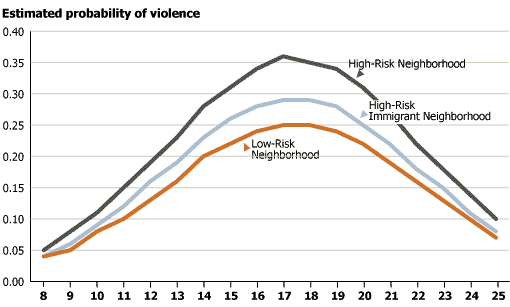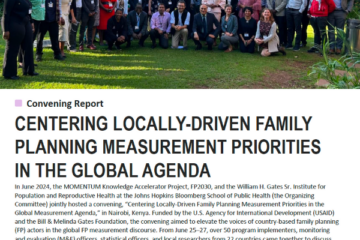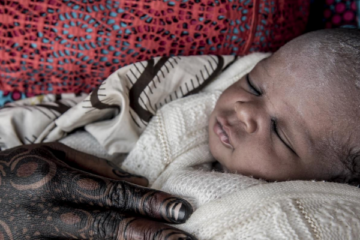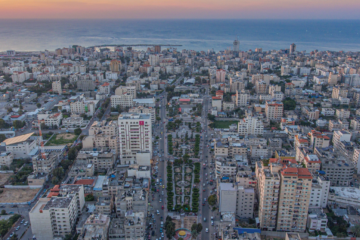
Surprising Social Factors Linked to Racial and Ethnic Disparities in Youth Violence in the U.S.
Date
April 1, 2005
Author
(April 2005) Why do black youth in the United States commit violent acts almost twice as often as white or Latino youth? Researchers at Harvard University have found that the reasons have little to do with individual poverty or inherent racial differences, according to a study published in the February 2005 issue of the American Journal of Public Health.
Rather, four factors—the marital status of a young person’s parents, the prevalence of professionals and managers in his or her neighborhood, whether he or she is a first- or second-generation immigrant, and the proportion of other people in the neighborhood who are immigrants—account for most of the differences in violent crime rates for youth, according to Robert J. Sampson, the study’s lead author.
“The data suggest that it’s more than just a family’s financial resources,” says Sampson, a professor of sociology at Harvard University. “The study shows that the disparity is largely social in nature and therefore amenable to intervention in community rather than individual settings.”
Wanted: A Comprehensive Study of Violence Rate Differentials
Researchers have long struggled to explain the longstanding racial and ethnic differences in violence rates. For example, while African Americans are six times as likely to die of homicide as whites, rates of violence among Latinos (who average less annual income than blacks) have declined to nearly those of whites.
Explanations for the gap have ranged from socioeconomic inequalities, racial segregation, the matriarchal pattern of family structure among African Americans, and “constitutional” differences in intelligence or impulsivity between blacks and whites. But Sampson and other researchers say few if any studies have attempted to weigh all of these factors over time.
The Chicago study attempts just such a comprehensive approach. It is a product of the Project on Human Development in Chicago Neighborhoods (PHDCN), a research effort that interviewed nearly 3,000 Chicago black, white, and Latino youth ages 8 to 25 periodically from 1994 to 2002. Among other topics, the study asked the youth to self-report their violent acts. Independently, over 8,000 Chicago residents were interviewed and asked about their neighborhoods and attitudes toward the law and social norms.
Sampson and his coauthors, Jeffrey D. Morenoff and Stephen Raudenbush of the University of Michigan, quantified the results of these interviews and combined them with data about the youth’s families; systematic observations about their neighborhoods; and more traditional measures, such as neighborhood socioeconomics from census data and a neighborhood’s prior history of violence from Chicago Police Department statistics. The study also factored in standardized test scores measuring these young people’s reading and verbal abilities as well as impulsivity.
In addition, Sampson and his co-authors took pains to include a wide range of Chicago neighborhoods in their study (segregated, integrated, rich, poor, and middle-class) in order to disentangle as many possible explanatory factors. “We wanted to make sure we had everybody represented,” says Sampson, “including black kids in higher income neighborhoods.”
Lauren Krivo, a professor of sociology and affiliate of the Criminal Justice Research Center at Ohio State University, calls the study “an important piece of research.”
“There’s not very much good research with good data that attempts directly to understand the sources of these differences and how these inequalities are socially embedded,” says Krivo.
A Segregated City With Unexpected Results
The study found pronounced differences in Chicago neighborhood characteristics along racial and ethnic lines. The city’s typical African American lives in a neighborhood that is 78 percent black, while its typical white or Mexican American lives in neighborhoods that are approximately 85 percent nonblack. Blacks were also more likely than whites or Mexican Americans to live in Chicago neighborhoods with concentrated economic disadvantage and high reported rates of cynicism about the law and social mores.
The rates of personal violence reported by the PHDCN survey were low and corresponded with national norms. The most prevalent instance of violence (hitting someone) was reported by less than 20 percent of respondents.
However, the odds of a surveyed black youth engaging in violence were 85 percent higher than those of white youth, and Puerto Ricans committed violent acts 26 percent more often than whites. Whites surveyed were 10 percent more likely to commit violence than Mexican Americans.
Sampson says the study was able to quantify factors for more than 65 percent of the gap in violence rates between blacks, whites, and Latinos. But he was surprised at some of the factors the study did (and did not) identify as explanatory of the gap:
- The risk of committing violence is comparatively lower for recent immigrant youth. Chicago and its suburbs are magnets for immigrants: According to Census 2000, the area has more than 1.4 million foreign-born residents (including more than 580,000 Mexican immigrants and more than 130,000 Polish immigrants). For those Chicagoans surveyed for this study, the odds of first-generation immigrants engaging in violence were almost one-half those of third-generation immigrants—implying that one reason whites and Latinos have lower levels of violence than blacks is that the first two groups are more likely to be recent immigrants. “Our data do not support the common link of immigration and violence,” says Sampson.
- Differences in family socioeconomic status are not directly associated with violence. “That’s not to say that the socioeconomic context you grow up in doesn’t help explain the gap,” says Sampson. “But in terms of family structure and characteristics, what matters instead of poverty are a family’s years of residence in the neighborhood, having married parents, and living in an immigrant neighborhood, both of which reduce a youth’s risk of engaging in violence.” For instance, the study attributes the low rate of violence among Mexican Americans to a combination of factors: that group’s high proportion of married-couple families, residence in neighborhoods with high concentrations of immigrants, and individual’s first- or second-generation immigrant status. (See figure for an example of the protective influence of immigrant status against risk of violence.)
Simulated Effects of Neighborhood Environments on Violent Offending for “Average” 3rd Generation Youth, by Age

Notes:
High-Risk Neighborhood=10th percentile professional and managerial occupations; 90th percentile cynicism; 0% immigrant
High-Risk Immigrant Neighborhood (10th percentile professional and managerial occupations; 90th pctile cynicism; 90th percentile immigrant)
Low-Risk Neighborhood (90th percentile professional and managerial occupations; 10th percentile cynicism; 0% immigrant)
Source: Robert J. Sampson, Jeffrey D. Morenoff, and Stephen Raudenbush, American Journal of Public Health (2005).
Note on figure: This figure illustrates how much of a difference neighborhood context can make on the likelihood that a given person will become involved in violence. It graphs the estimated probability of engaging in violence by age for three hypothetical types of neighborhoods: (1) a “low risk” neighborhood, where a very high percentage of people work in professional and managerial occupations and very few people hold cynical attitudes about the law and morality; (2) a “high-risk” neighborhood, where very few people hold professional and managerial jobs and cynicism is more pervasive; and (3) a “high-risk immigrant neighborhood,” which also has low shares of professional and managerial workers and high degrees of cynicism but where about one-half of the people are immigrants. The estimated probability that an identical 17-year-old person living in this neighborhood will engage in violence is 29 percent, seven percentage points lower than it is in the high-risk neighborhood without any immigrants. This shows the protective influence against violence of immigrant neighborhoods.
- Just because a child grows up in a female-headed household does not increase her or his odds of being violent. “The tendency in past debates on black families has been either to pathologize female-headed households as a singular risk factor or to emphasize the presence of extended kin as a protective factor,” write the authors. “Yet neither factor predicts violence in our data.” Instead, the study found that having married parents, even if the parents are not living together, lowers a child’s probability of engaging in violence.
- Having a large percentage of professionals in a neighborhood reduces its youths’ chances of engaging in violence. “The effect is one of the strongest ones in the research,” says Sampson. “The odds of violence are about three-quarters lower in neighborhoods with 40 percent or more of its workers in professional occupations. The data seem to suggest that educated and professional/managerial status seems to be a protective factor, regardless of the poverty of the neighborhood.”
- Constitutional factors such as reading ability and impulsivity are significant predictors of violence but weak explainers of the racial and ethnic disparities in violence rates. “They only explain about 6 percent of the gap between blacks and whites, and they have no bearing on the gap between Mexican Americans and whites,” says Sampson. Indeed, white and black youth surveyed scored about the same on a standardized test for impulsivity.
Segregation Concentrates Factors That Influence Violence Rates
Sampson and his co-authors argue that the study’s findings confirm that segregation in cities disproportionately exposes different racial or ethnic groups to factors that induce or discourage violence.
“Our theoretical perspective argues that segregation concentrates in a neighborhood all the things that are correlated with race in society,” Sampson says. “Anything correlated with ‘black’ is concentrated in these African American neighborhoods because of the segregation dynamics in the city. Even at the same exact income level or same individual IQ score or same marital status—in all cases, black youth are living in a much more compromised environment because of residential segregation.”
But the good news from the study, according to Sampson, is that initiatives on a community level—such as vouchers to help poor families move into middle-class neighborhoods, or programs to stabilize the professional component of African American neighborhoods—could go a long way toward closing the gap in violence rates. He argues particularly for targeting neighborhoods that are “spatially vulnerable”—that is, surrounded by higher-risk neighborhoods.
Krivo cautions, however, that future research must go beyond the individual and neighborhood to gauge how increased institutional presence and economic investment might be protective factors against violence. “You want to figure out what those communities that lack professionals need in terms of investments to attract those people back into the neighborhoods,” she says.
Sampson adds that more research is needed to explain the other 35 percent of the gap left unexplained by the Chicago study. But he stands by the results’ major thrust. “The way I view it is that large systematic variations [in rates of violence] are explained by a relatively small number of factors,” says Sampson. “The glass is half-full. The message is that the disparity is social in nature.”
Robert Lalasz is a senior editor at PRB.
For More Information
Robert J. Sampson, Jeffrey D. Morenoff, and Stephen Raudenbush, “Social Anatomy of Racial and Ethnic Disparities in Violence,” American Journal of Public Health 95 (2005): 224-32.






